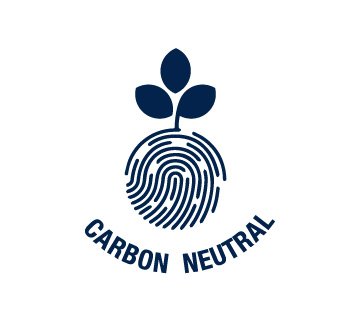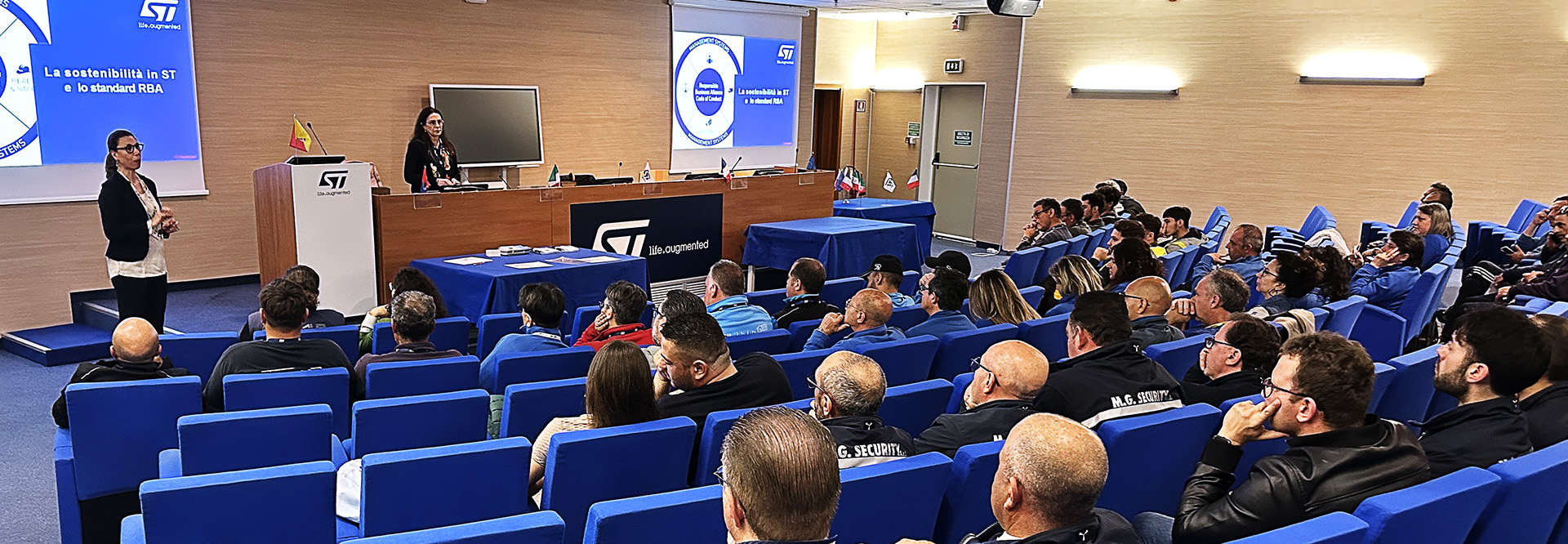Responsible supply chain
We aim to systematically assess, mitigate, or eliminate sustainability risks in our operations and extended supply chain.
97%
of suppliers at risk agree to comply with RBA code of conduct
610
supplier responsibility audits since 2015
1,600+
supplier employees trained
With over 6,000 direct suppliers worldwide, our supply chain has a significant potential impact on people and the environment. Our ambition is to source responsibly to create state-of-the-art technologies that contribute to a more sustainable world.
Our program runs across all our operations and throughout the lifecycle of our supplier relationships. We monitor our suppliers using social, environmental, and governance criteria, auditing those that are classified as high-risk. This enables us to mitigate major risks and impacts, with a focus on carbon neutrality and human rights, including forced labor of vulnerable workers, unfair working conditions, and health and safety. 3-3
Our supply chain
46%
of our procurement spend in Europe
Our suppliers range from large-scale manufacturing subcontractors, material suppliers, and equipment and spare-parts suppliers, to smaller scale onsite service providers and labor agencies. Our procurement spend is split mainly between Europe (46%) and Asia (35%), and we manage 40% of our procurement volume locally, at a national level. 2-6204-1
Procurement volume by category 2-6
Integrated responsible supply chain management
We continually reinforce our management systems to make them more proactive, strategy-embedded, risk-oriented, and impact-driven. Decisions and actions are steered through robust sustainability governance. Our Sustainability Committee conducts dedicated, expert-led sessions on responsible supply chain at least annually to advise the Supervisory Board (see Governance).
In 2023:
- We launched several new working groups involving key internal stakeholders, including Procurement, Sustainability, Risk, and Finance, to address recently adopted and upcoming regulations in Europe regarding social and environmental due diligence in the supply chain.
- We continued to integrate sustainability in procurement by adopting a new vision: ‘Strategically-led best-in-class procurement enabling ST’s competitive advantage for sustainable growth and profitability’; and mission: ‘Drive strategic, operational, and transactional excellence by selecting, developing, and leveraging suppliers that are highly-integrated into our company strategy, in a sustainable manner’.
- We reinforced sustainability roles in procurement management. We hired additional staff to monitor suppliers and provided training in human rights and environmental topics. We also launched an ambitious training program for our buyers as a first step in raising their awareness of environmental challenges.
- We reinforced our supply chain environmental strategy around renewable energy procurement (see Energy and climate change), water (see Water), and climate change (scope 3). Within this framework, we launched a comprehensive carbon footprint assessment of our most emissive suppliers through our ‘Carbon neutrality in the supply chain’ program (see focus).
- We created a supply chain mapping committee to reinforce our responsible sourcing program, extending the scope beyond conflict minerals to other critical materials, and adopted a forced labor statement detailing our actions in our upstream supply chain.
FOCUS

Carbon neutral supply chain project
ST is committed to decarbonization and aims to work with its partners to reduce carbon emissions. In 2023, we launched a carbon neutral supply chain program to reduce our scope 3 emissions related to the purchase of goods and services. The objectives are to:
- build the carbon footprint calculation methodology
- identify and prioritize decarbonization levers
- integrate carbon reduction criteria into procurement processes
- train buyers through a dedicated learning plan
In 2023, one of the program’s main achievements was collecting the carbon footprint of 95 suppliers, representing more than 60% of our purchasing spend, including those suppliers and subcontractors with the highest emissions. The figures showed that our top 50 suppliers represent 60% of our scope 3 greenhouse gas emissions related to the purchase of goods and services.
An additional achievement was identifying emission reduction levers for pilot commodities and developing guidance to engage suppliers.
We also built a roadmap for a three-stage training course for buyers, launching the first stage to raise awareness of environmental challenges.
Our next steps will be to upskill our buyer community with advanced training, set reduction objectives with suppliers, and monitor their performance.
Risk management
Our approach to managing our supply chain starts with identifying risks. This enables us to take targeted actions to control these risks and remediate any negative impacts.
Sustainability risks
To identify, prevent and mitigate sustainability risks, we conduct regular risk assessments of our supply chain.
100%
of new material suppliers assessed on sustainability risks
We assess risks before onboarding suppliers. In 2023, 100% of our new material suppliers were assessed for sustainability risks, including risks related to forced labor, occupational health and safety, and the environment, including management of hazardous substances. When critical risks such as forced labor are identified, we take further action, ranging from individual support to full onsite audits. Failure to mitigate risks may result in banning suppliers.
Each year we conduct a risk assessment of all our tier one suppliers based on supplier activity risks and supplier location risks. Risk identification is based on external data obtained through an intelligence platform and industry audit results, as well as internal audit data. We refine the process according to purchasing spend and the presence of suppliers on site. In 2023, we identified 373 suppliers across 541 facilities as being at risk in terms of sustainability.
In 2023 we launched a company-wide program dedicated to carbon footprint assessment. The assessment covers 95 suppliers representing more than 60% of our annual spend in 2022.
We also detect risk on health and safety of construction projects through an enhanced safety tracking system (see Health and safety).
Addressing and monitoring our risks
Engage, prevent, mitigate, and remediate
As a full member of the Responsible Business Alliance (RBA), we are committed to complying with the RBA code of conduct, which we have adopted as our supplier standard. The RBA supplier engagement model (see below) is an important pillar of our supply chain due diligence.
When entering into a business relationship with ST, suppliers must declare they have read and understood ST’s business ethics and corporate responsibility statement, and that they agree to comply with the latest version of the RBA code of conduct and apply it in their own supply chain.
In addition, we require our high-risk suppliers to undertake the three steps of the RBA engagement model:
Commitment letter
Suppliers sign a supply chain responsibility commitment letter, agreeing to comply with the RBA code, complete self-assessment questionnaires, and accept second- or third-party audits.
Self-assessment questionnaire (SAQ)
Suppliers complete an RBA self-assessment. The results enable us to identify areas that require attention.
RBA-based audit and follow-up
Suppliers receive a third-party RBA Validated Assessment Program (VAP) audit or a second-party RBA-based audit to monitor and control compliance and address areas of non-compliance with corrective actions.
+29%
suppliers audits in 2023
In 2023:
- 97% of our high-risk suppliers signed the RBA commitment letter to contractually engage on RBA standards and audit
- 444 suppliers’ facilities completed a self-assessment questionnaire, 13% up on 2022
- 150 corporate social responsibility audits were conducted, 29% up on 2022
Top audit findings of material, equipment/spare-parts suppliers and subcontractors (1) 308-2414-2409-1
Top audit findings of service providers (1) 308-2414-2409-1
We regularly follow-up with our suppliers to encourage them to sign the RBA commitment letter. Our aim is to secure 100% compliance. All audited suppliers with non-conformances must implement corrective actions. These are verified in a follow-up closure audit. Our closure rate is reported in Key data.
Sustainability performance is fully integrated into our supplier performance management model. If the supplier is unable or unwilling to meet these requirements, we may impose sanctions. These could include decreasing the supplier’s market share or terminating the contract.
Our actions also cover remediation if harm is detected. The amount of recruitment fees reimbursed to workers as remediation measures decreased significantly in 2023 to US$6,000, compared to US$248,000 in 2022. This was due to delays in some supplier reimbursements. Some reimbursements also included fees related to medical expenses, which are usually much lower than other recruitment fees, leading to a lower average reimbursement amount per worker.
Capacity building on sustainability
Engaging buyers
In 2023, more than 150 buyers were engaged in our carbon neutrality training program. The first of the three stages aims to raise buyers’ awareness of environmental challenges and create a common culture of environmental engagement. Subsequent stages aim to develop advanced and expert competencies to targeted managers and buyers.
Training procurement managers
We regularly train procurement managers engaged in responsible supply chain programs to develop their expertise in social and environmental domains.
In addition, we invite our procurement community to participate in responsible supply chain quarterly calls, where we present the most recent updates on regulations, risk identification, and monitoring processes.
Developing suppliers
We support our suppliers in raising their awareness of sustainable practices. We provide e-learning on risk areas such as labor (including working hours and forced labor), ethics, health and safety, and the environment, and through dedicated awareness sessions where necessary.
In 2023, more than 170 companies participated in our customized learning paths in the RBA e-learning platform or were trained by our site Sustainability Champions. In addition, our site Sustainability Champions, together with ST’s suppliers, organized awareness and training sessions for workers. Overall, more than 1,600 supplier employees took part in e-learning sessions, meetings, webinars, and workers’ voice channels in 2023.
We also engage locally with suppliers by organizing local stakeholder events at ST sites. These included a safety week at ST Crolles (France), supplier days at ST Bouskoura (Morocco), ST Catania (Italy), and ST Kirkop (Malta), and sustainability commitment trophies at ST Rousset (France), where we created a sustainability award for local suppliers. The 2023 award went to Sodexo for its ‘Waste Watch’ program to reduce catering waste.

Dai Niizuma
General Affairs and Personnel Department, TESEC Corporation
The standards of the RBA are often more stringent than domestic laws. It is challenging to understand complex requirements and align company rules, including those for suppliers. Amid these challenges, we greatly appreciate ST’s support, providing advice on RBA, introducing RBA-hosted events and educational programs, and addressing our specific queries.
Grievance reporting
Like our own employees, our suppliers and their workers have the right to use our independent multilingual ethics hotline to share any concerns. The hotline is accessible online (see www.st.com) or by phone in several languages and allows reports to be made anonymously if desired. If grievances are raised, ST and the supplier must ensure complainants are protected against any retaliation. 3-3
Contributing to the SDGs
Our commitments and programs described above contribute to UN Sustainable Development Goals (SDGs):
SDG target 8.7 – Take immediate and effective measures to eradicate forced labor, end modern slavery and human trafficking, and secure the prohibition and elimination of the worst forms of child labor.
SDG target 8.8 – Protect labor rights and promote safe and secure working environments for all workers.
SDG target 17.16 – Enhance the global partnership for sustainable development, complemented by multi-stakeholder partnerships that mobilize and share knowledge, expertise, technology and financial resources, to support the achievement of the sustainable development goals in all countries, in particular developing countries.
2025 sustainability goal |
Status |
Comments |
SG20: Conduct an annual risk assessment of our supply chain and audit 100% of our high-risk suppliers by 2025. |
Risk assessment conducted |
Annual sustainability goal |
Status |
Comments |
≥90% of suppliers at risk for sustainability signed an agreement to comply with the RBA code of conduct. |
97% |


